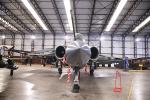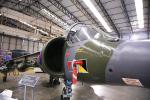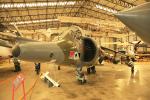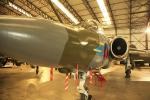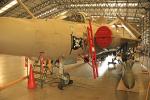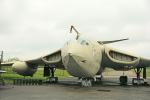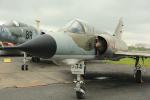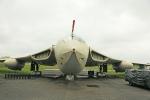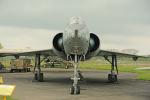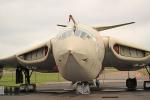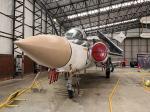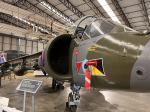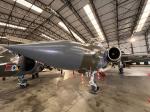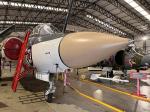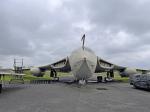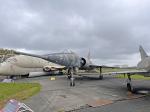Minutes to Midnight - Hot Jets in the Cold War
A new display of Military aircraft is currently ongoing at the Yorkshire air museum entitled ‘Minutes to Midnight – Hot Jets in the Cold War’.
The Cold War began after the surrender of Nazi Germany in 1945, when the uneasy alliance between the United States and Great Britain on the one hand and the Soviet Union on the other started to fall apart. The Soviet Union began to establish left-wing governments in the countries of eastern Europe, determined to safeguard against a possible renewed threat from Germany. The Americans and the British worried that Soviet domination in eastern Europe might be permanent. The Cold War was solidified by 1947–48, when U.S. aid had brought certain Western countries under American influence and the Soviets had established openly communist regimes. Fortunately, there was very little use of weapons on battlefields during the Cold War. It was waged mainly on political, economic, and propaganda fronts with the constant threat of nuclear war in the background.
The Cold War started to break down during the administration of Mikhail Gorbachev, who changed the more totalitarian aspects of the Soviet government and tried to democratize its political system. Communist regimes began to collapse in eastern Europe, and democratic governments rose in East Germany, Poland, Hungary, and Czechoslovakia, followed by the reunification of West and East Germany under NATO auspices. Gorbachev’s reforms meanwhile weakened his own communist party and allowed power to shift to the constituent governments of the Soviet bloc. The Soviet Union collapsed in late 1991, giving rise to 15 newly independent nations, including a Russia with an anti-communist leader.
If the stalemate had been broken, aircraft would have played a significant role in what happened next. In Minutes to Midnight the air museum has shone a light on the aircraft at the museum that played a part in the Cold War, from the mighty ‘Handley Page Victor’ to the ‘Buccaneer’, ‘Hawker Siddeley GR3 Harrier’ and ‘Tornado’.
I spent several years as a young 17-year-old apprentice at the then ‘Blackburn Aircraft Factory’ in Brough, working on the Buccaneer aircraft, both on the air frame and later fight test, at the time not realising the significance of this aircraft had war broken out. The Buccaneer was designed as a nuclear strike aircraft for the Royal Navy, armed with the ‘Red Beard’ nuclear bomb, later to be replaced with the ‘WE177’ bombs. The aircraft would have been tasked with destroying Soviet ships in the event of a nuclear war. Had the Cold War turned Hot, the aircraft would have been scrambled from RAF bases in West Germany. The Buccaneer is like an old friend to me with lots of happy memories whilst working on it. It is nice to see three of them (one freshly painted) in the hanger, alongside the GR£ Harrier.
Outside of T2 hanger on the airfield apron are several other aircraft from the ‘Cold War era’ including the Victor, and the French Mirage 1V.
Over in the HP Hangar is a fascinating and interesting display and exhibition about how the ‘Cold War’ came about with lots of information about the WE177 nuclear bomb which was carried by the British aircraft until the 1910’s
Over in the Astra Cinema were lots of eyewitness accounts of the Cold War from the people who had lived through it.
This really is a fascinating and interesting exhibition and I look forward to another visit.
|

